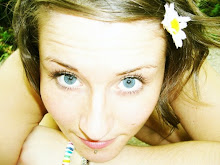Art has changed. And so have the people running it. A sharp-minded breed of iconoclastic curators is revolutionising both the gallery scene and the way that we experience art.
Here's an article that I found in the observer about curating.I thought It'd be quite interesting to read about how curators find the work rather than just telling it from an artist or audiences persepctive.
Curating art used to be a
straightforward enough, if onerous, occupation. Typically, curators thoroughly versed in art history would use their research skills putting together what they saw as the best art works of a particular movement or historical period. For figures such as David Sylvester, curating wasn't really regarded as a major profession - more of a side show in the ongoing business of being an art authority. Things, however, have changed drastically since then. University courses in curating are springing up. And where once museums looked to the art historians of places such as the Courtauld Institute for the next generation of art supremos, they are now turning to something like the Royal College of Art's curating course, fast becoming the inside track for tomorrow's leading curators and museum directors. In turn, today's curators and museum directors have ditched anonymity.
'The curator of contemporary art is now concerned with the whole physical and intellectual experience of an exhibition,' explains Teresa Gleadowe, head of the RCA's curating course. Simply doing bucket-loads of art historical research is not enough. In the ground-breaking 1972 exhibition Documenta 5, Harald Szeemann - perhaps the first major freelance curator - dumped aesthetic categories and instead arranged the art through themes like 'Idea' and 'Individual Mythologies'.
Gleadowe argues that there's a huge difference between today's curators and those art historians of the past. 'Curators are now required to engage with new art as it emerges and find a critical context for the reception of that work,' she says. In reality, those critical contexts tend to act almost as curatorial trends - for instance at the moment there is a definite turn away from 90s irony to either some sort of return to socially committed art or art about everyday situations. And the broadening of the art world from a European-North American axis to a global scale means most contemporary curators now spend huge amounts of time flitting to and from art festivals around the world to keep up with what's going on - as well as to unearth buried talent.
Through the 80s and 90s curating evolved rapidly. In 90s Britain, there was a shift away from institutions - Damien Hirst and Carl Freedman famously took matters into their own hands with the Freeze and Modern Medicine exhibitions that set young British art rolling. Curators started putting shows on in domestic spaces, and combining art with non-art objects. In Berlin, Daniel Pflumm got the whole 90s Mitte art scene going by exhibiting works in his nightclub, Elektro.
In some ways curators became the counterpart to dealers: where the latter would shift artworks, the former would make works credible by putting them in exhibitions. If a work caught the eye of the right curator and got included in a big show it did wonders for its price and the standing of the artist. Inevitably the institutions have caught up, employing the new breed of contemporary curator to become museum directors and effect change from within. What's certain is that the days of paintings organised into neat chronological rows are well and truly over














